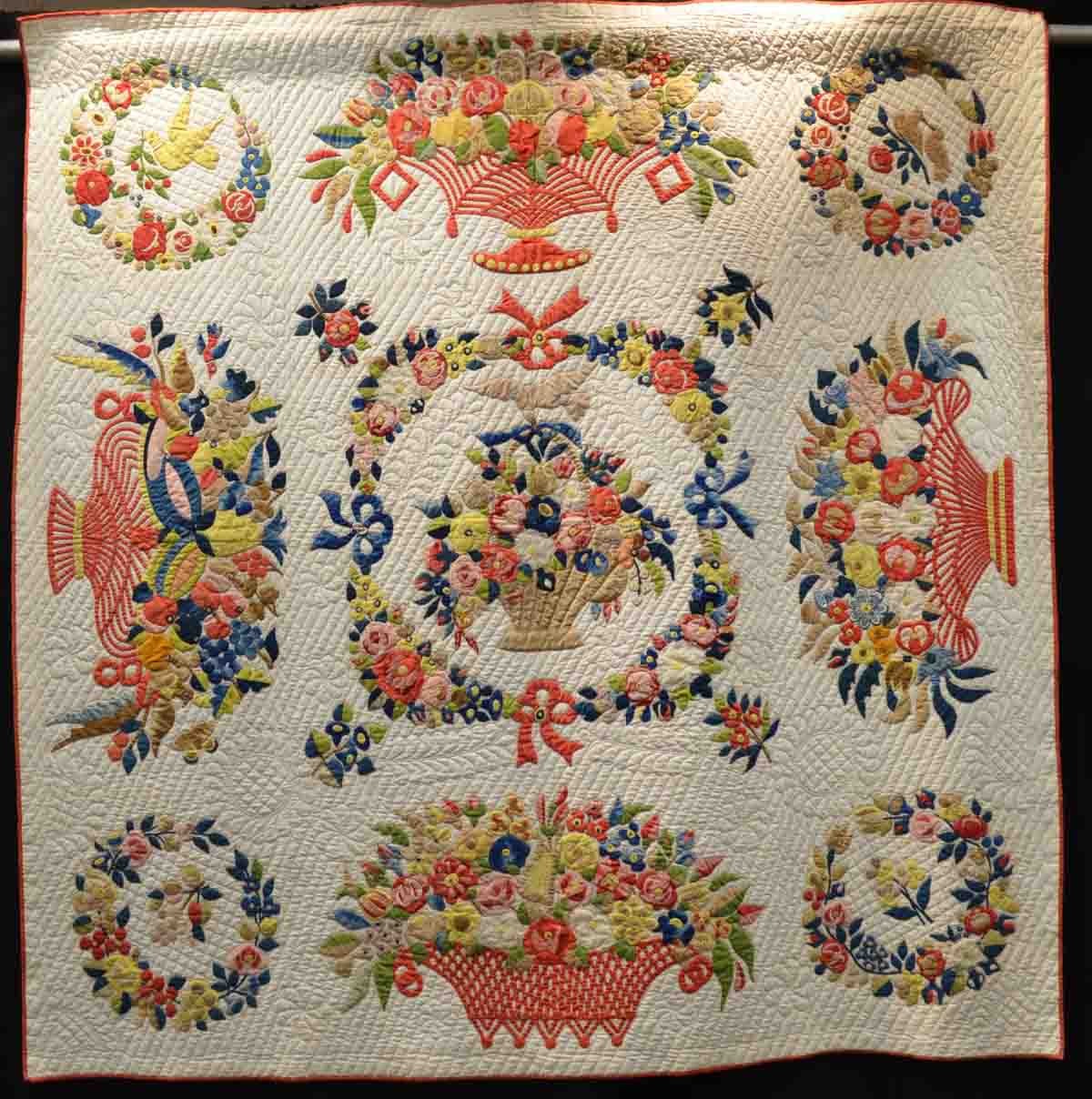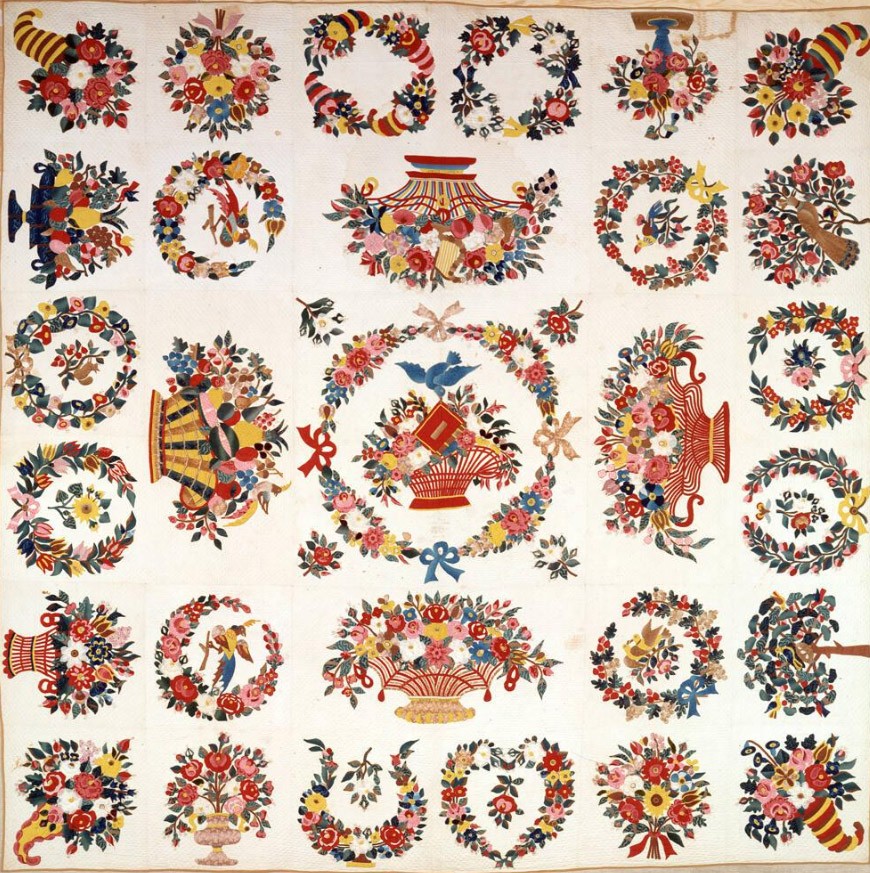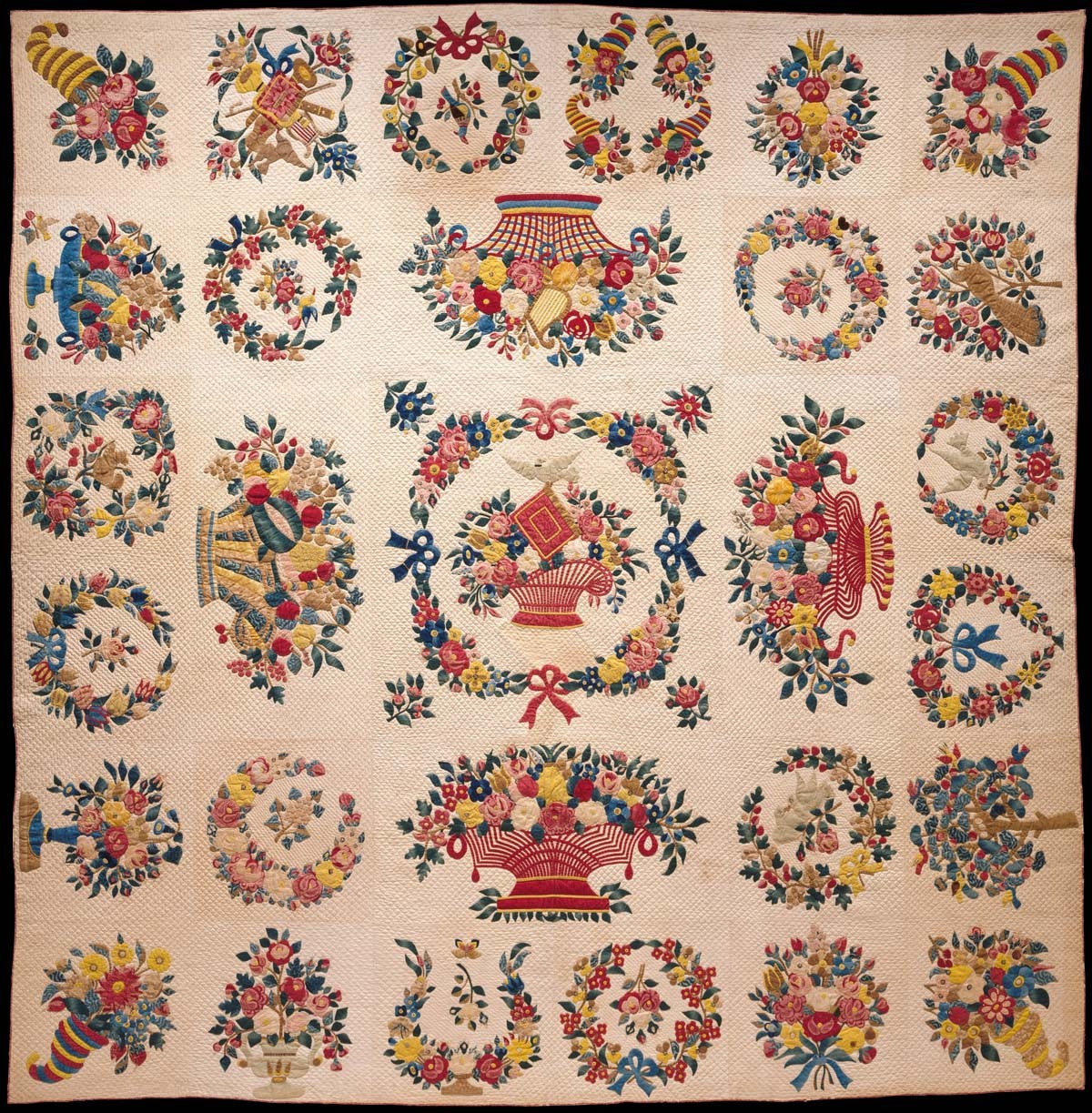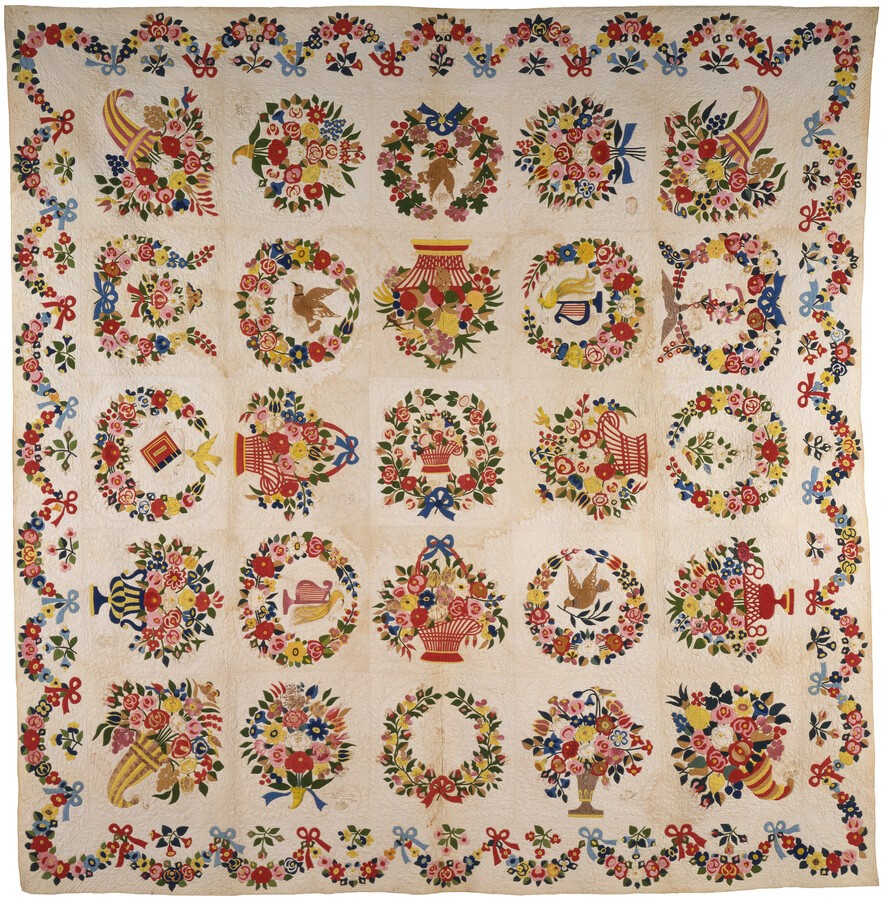Textiles and the Triplett Sisters
Baltimore Album Quilts: Makers

As we discussed in our last blog, there were many reasons why these more than 300 BAQs were made. The reason they were made also provides some hints to the makers, whether a church group, and family honoring a member, or neighborhood. However, it seems likely that there were also professional seamstresses working on and selling these blocks and/or quilts.

William Rush Dunton in the book Old Quilts, was the first to study and publish about the Baltimore Album Quilts. Arthur Evans Bramble brought to Dunton’s attention 7 Baltimore Album Quilt blocks that Bramble said were the work of his great aunt, Mary Evans. These seven blocks were used to make up a diagnosis of the Mary Evans style (baskets, inked details, triple bow knots, white roses, rainbow fabrics etc.) Mary Evans name was not found on a block, suggesting a professional maker instead of a “friend.” Dena Katzenberg, Curator of the Baltimore Museum of Art, said analysis of her handwriting on an application to an Aged Woman’s Home resulted in her being credited with about 50% of the finest inscriptions on these quilts.

But credit to Mary Evans fell out of favor because the stitching on the seven blocks varied like several people had worked on those blocks, no record of her working as a seamstress had been found, and with the discovery of Hannah Trimble’s diary, a written record of the time. Hannah wrote of going “to Mrs. Simon’s on Chestnut Street, the lady who cut and basted these handsome quilts, saw some pretty squares.” Thus began the period of Mary Simon being credited with this particular style of quilt. Now there is even some discussion of a Mrs. Sliver/Silver also mentioned in the diary as a potential quilt artist, because a Baltimore Album Quilt was also seen there.

However, in our research of the 1860 Wood’s Baltimore City Directory we recently uncovered a Mary Evans dressmaker at 144 Hanover Street. At that same address Sarah Silver, dressmaker, and Jane Harrison dressmaker were also listed. Three dressmakers all at the same address would account for the different stitches in the blocks. It would also account for the ability to take commissions and make more of these quilts than a single person working alone. The completed blocks could have been passed onto Mary Simon for trimming (cutting) sandwiching, and basting. Hannah wrote of seeing Mary Simon on Chestnut Street, so it appears that Mary worked out of her husband Phillip’s carpet weaver location at 220 Chestnut. It appears that multiple of the experts got a piece of story correct, but my working theory is that we need to consider more groups of seamstresses who made these quilts. In our next blog we’ll examine another group of seamstresses associated with multiple quilts.


